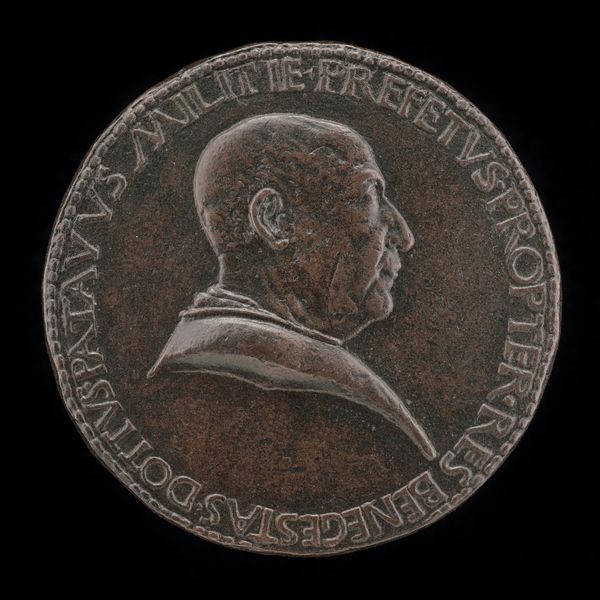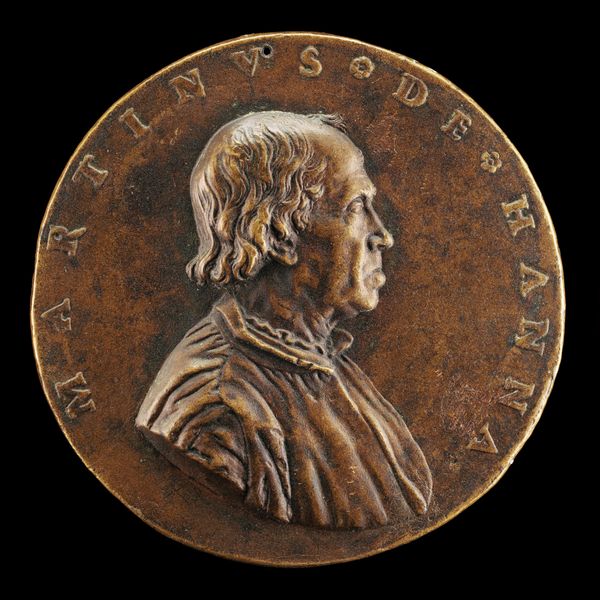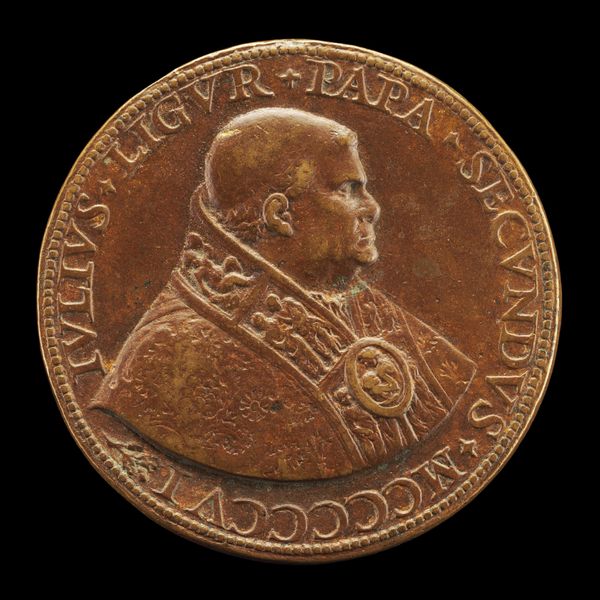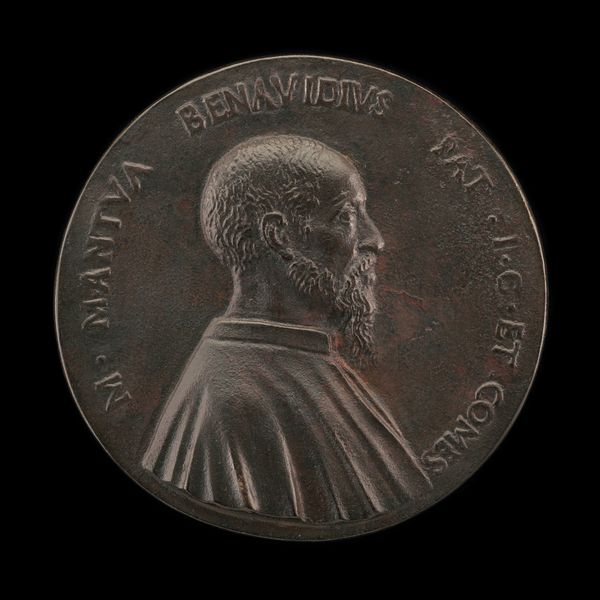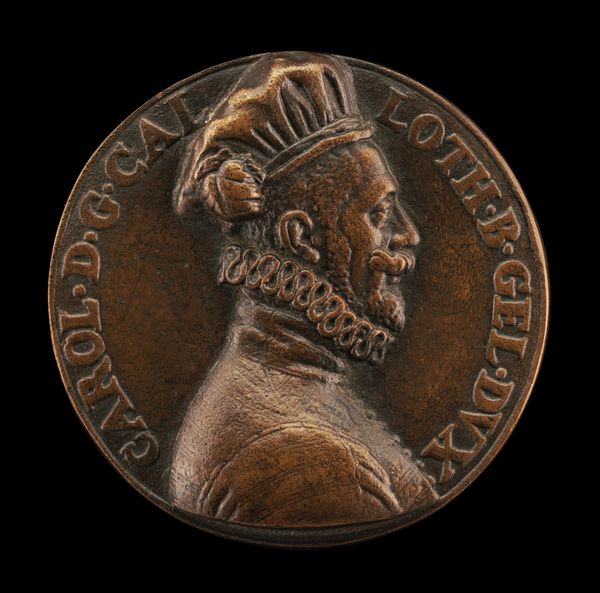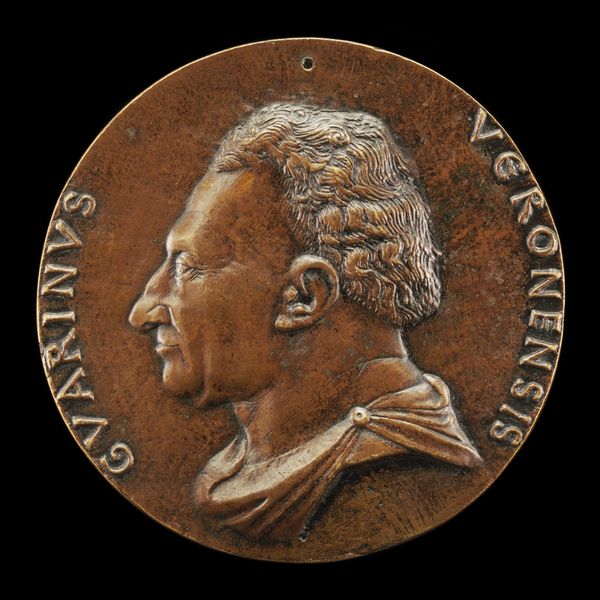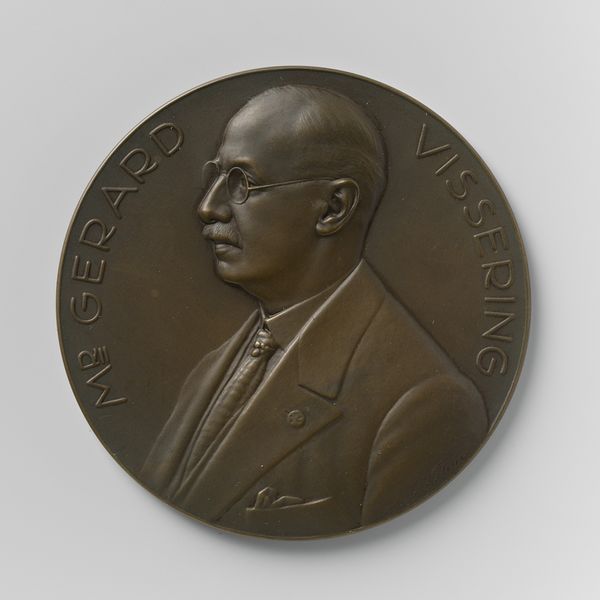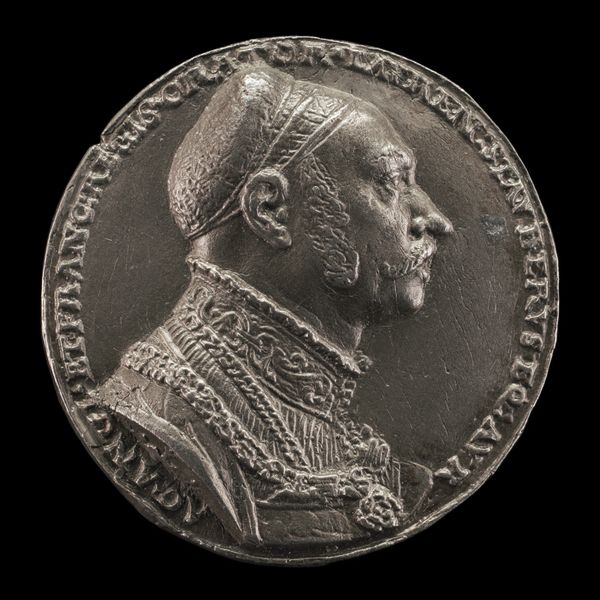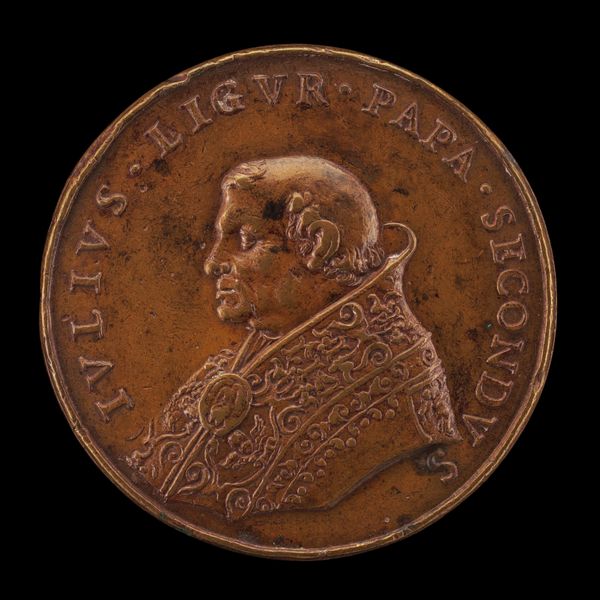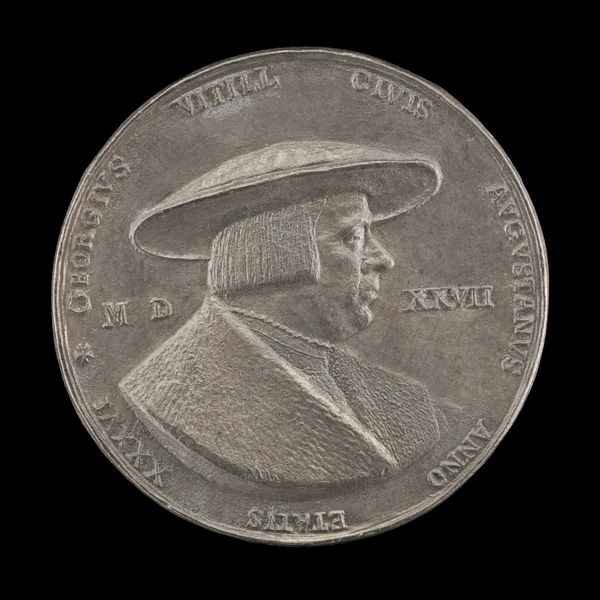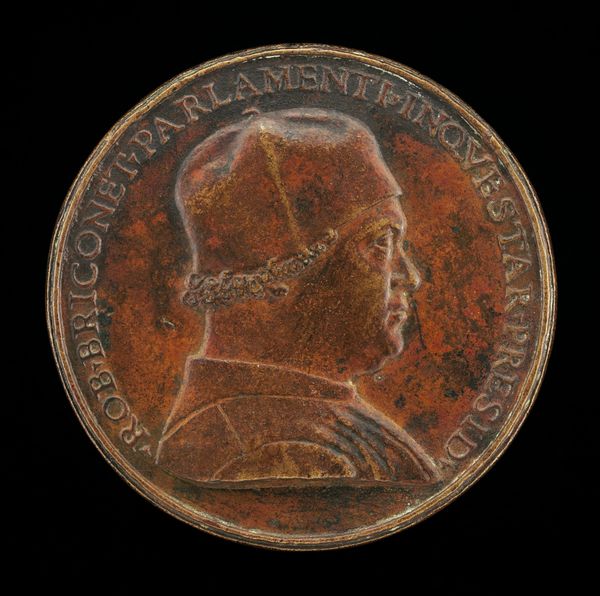![Mateo Vásquez, c. 1542-1591, Secretary to King Philip II from 1573 [obverse] by Anonymous](/_next/image?url=https%3A%2F%2Fd2w8kbdekdi1gv.cloudfront.net%2FeyJidWNrZXQiOiAiYXJ0ZXJhLWltYWdlcy1idWNrZXQiLCAia2V5IjogImFydHdvcmtzL2FmNTNkZTZjLWIwYWItNGQ0ZC1iNWFkLTg5ZGY3ZTI0NGY3MC9hZjUzZGU2Yy1iMGFiLTRkNGQtYjVhZC04OWRmN2UyNDRmNzBfZnVsbC5qcGciLCAiZWRpdHMiOiB7InJlc2l6ZSI6IHsid2lkdGgiOiAxOTIwLCAiaGVpZ2h0IjogMTkyMCwgImZpdCI6ICJpbnNpZGUifX19&w=3840&q=75)
Mateo Vásquez, c. 1542-1591, Secretary to King Philip II from 1573 [obverse] c. 1573
0:00
0:00
bronze, sculpture
#
portrait
#
medal
#
sculpture
#
bronze
#
11_renaissance
#
sculpture
#
history-painting
#
italian-renaissance
Dimensions: overall (diameter): 5.29 cm (2 1/16 in.) gross weight: 40.92 gr (0.09 lb.) axis: 12:00
Copyright: National Gallery of Art: CC0 1.0
Editor: So this is a bronze medal, dating from around 1573, depicting Mateo Vásquez. He was King Phillip II’s secretary. The bronze has such a deep color, and the relief really makes the figure stand out. It feels very stately, very official. What can you tell me about this type of portraiture? Curator: It’s interesting to consider this medal not just as a likeness, but as a political object. Portrait medals, especially in the Renaissance, were tools for disseminating images of power and authority. Consider how this medal, in circulating, might shape public perception of both Vásquez and by extension, the Spanish court. Editor: So, it's a way of controlling the narrative, a bit like official portraits of presidents today? Curator: Precisely. And think about the choice of bronze, a material often associated with permanence and classical antiquity. How does that material contribute to the intended message of the piece, particularly regarding lasting legacy? Editor: I guess using bronze would emphasize the subject's importance and position in history, linking him to a legacy of power through both the material and the style. What strikes me is that there's no artist credited... Was that typical? Curator: Yes, often the patron or the subject held more significance than the artist, particularly in medals which were more functional than high art. The creation was part of a broader political project. These objects teach us so much about the power structures of the era. Editor: I never thought about a medal having that much political weight, more than just showing someone's face! It adds a whole other level of meaning. Curator: Indeed! Examining art through a historical lens reveals the profound connections between aesthetics and the socio-political forces at play.
Comments
No comments
Be the first to comment and join the conversation on the ultimate creative platform.
